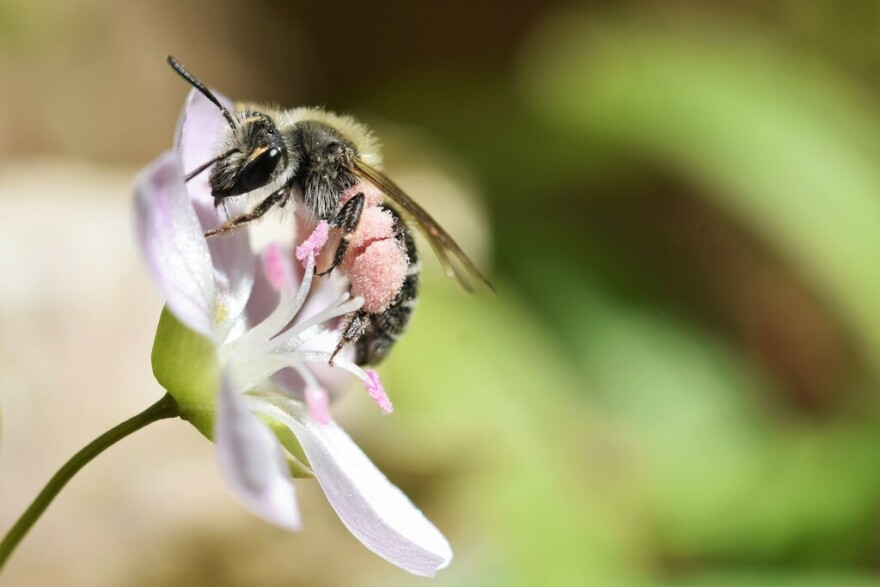KAXE's Tuesday Morning Show strives to take an in-depth look at some natural resource-based issues important to Northern Minnesota. Producer Mark Jacobs and hosts Heidi Holtan and John Latimer discuss the problems and highlight some creative solutions.
See the forest for the bees
When thinking of pollinator habitat, most of us envision a field of wildflowers. But according to MN DNR’s Jessica Peterson, forests also provide important habitat for Minnesota’s native pollinators. An invertebrate ecologist, Peterson’s work focuses on terrestrial insects such as bees, and she has concerns about the decline of some of our native species.

Many bee species use forests for food, especially in spring when they emerge from hibernation. Tree species such as maples, oaks, and basswood provide pollen and nectar in early spring. Early flowering small trees/shrubs such as willow, juneberry, dogwood, and highbush cranberry are also important, along with many spring ephemerals that flower before tree leaf out.
These forest habitats don’t just provide food, but also ideal spots for reproduction. Dead standing trees, fallen logs, and cavity trees are important nesting areas for several species of solitary bees. Listen above to discover more about pollinators of the forest and learn how to help them thrive.
Topics
- Introduction (0:00-1:03)
- Jessica’s role as an invertebrate ecologist (1:03-1:44)
- Concerns for local pollinators (1:44-4:03)
- The importance of forests for pollinators (4:03-11:54)
- How to help forest pollinators (11:54-14:50)
- Hope for pollinators (14:50-16:14)
- Conclusion (16:14-16:42)
What pollinators have you noticed recently? Let us know; email us at comments@kaxe.org or text us at 218-326-1234.
Funding for this project was provided by the Minnesota Environment and Natural Resources Trust Fund as recommended by the Legislative-Citizen Commission on Minnesota Resources (LCCMR).






